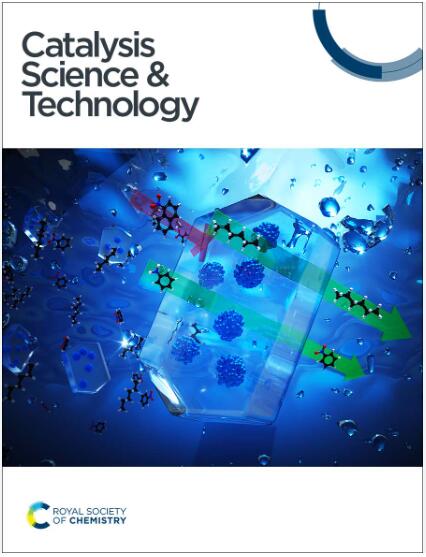g- c3n4修饰BiOCl作为可见光催化剂及其增强光催化降解/杀菌性能
IF 4.2
3区 化学
Q2 CHEMISTRY, PHYSICAL
引用次数: 0
摘要
为了解决BiOCl材料光响应范围窄、载流子易重组的缺点,采用简单的煅烧策略,用g-C3N4修饰BiOCl。获得了具有高比表面积(48.11 m2 g−1)和可见光响应的BiOCl/g- c3n4纳米片。当使用BiOCl/g-C3N4(质量比为10:2)时,RhB在10 min内降解率超过90%,MO在3 h内降解完成,91.35%的硫氧化菌可被清除。g-C3N4与BiOCl之间形成的层间嵌层结构不仅增加了比表面积,而且通过BiOCl/g-C3N4异质结促进了电子转移和载流子分离。除了这些实验证据外,通过能量带调节和光生载流子的显著分离(由DFT计算提供)证实了太阳能的有效利用和光生载流子的显著分离,这是BiOCl/g-C3N4异质结具有优异催化性能的原因。本文章由计算机程序翻译,如有差异,请以英文原文为准。

g-C3N4-modified BiOCl as a visible light catalyst and its enhanced photocatalytic degradation/sterilization performance†
In an effort to tackle the disadvantages of the narrow photo-responsive range and easy recombination of carriers in BiOCl materials, a simple calcination strategy was adopted to modify BiOCl with g-C3N4. BiOCl/g-C3N4 nanoplates with a high specific surface area (48.11 m2 g−1) and visible photoresponse were obtained. When BiOCl/g-C3N4 (mass ratio: 10 : 2) was used, the degradation rate of RhB exceeded 90% within 10 min, while the degradation of MO was completed within 3 h. In addition, 91.35% of the sulfur-oxidizing bacteria could be eliminated. The sheet-to-sheet intercalation structure formed between g-C3N4 and BiOCl not only led to an increase in specific surface area but also facilitated electron transfer and carrier separation through the BiOCl/g-C3N4 heterojunction. In addition to these experimental evidence, the efficient utilization of solar energy and remarkable separation of photogenerated carriers, confirmed by energy band regulation and significant electron accumulation in the heterojunction (as provided by DFT calculations), contribute to the superior catalytic performance of the BiOCl/g-C3N4 heterojunction.
求助全文
通过发布文献求助,成功后即可免费获取论文全文。
去求助
来源期刊

Catalysis Science & Technology
CHEMISTRY, PHYSICAL-
CiteScore
8.70
自引率
6.00%
发文量
587
审稿时长
1.5 months
期刊介绍:
A multidisciplinary journal focusing on cutting edge research across all fundamental science and technological aspects of catalysis.
Editor-in-chief: Bert Weckhuysen
Impact factor: 5.0
Time to first decision (peer reviewed only): 31 days
 求助内容:
求助内容: 应助结果提醒方式:
应助结果提醒方式:


